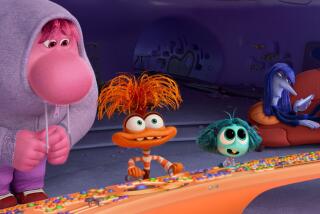Digital’s Downside Will Have Us Reeling
- Share via
Re “A Family That Stays Focused,” April 23: Fifty years after the last Simplex E-7 was built, some of these vintage projectors continue to provide faithful service in theaters and screening rooms. With newer lenses, modest upgrades and thoughtful maintenance and handling, these projectors can outperform newer projectors and run hundreds of scratch-free showings of a single print. Digital sound can be added to these old beasts without much fuss. And when Kodak and others improve upon already high-resolution film stock, the benefit is immediate.
Digital projection’s current resolution level is less than half that of film. Projectors are rendered obsolete with each resolution improvement. Any standard that is agreed upon soon is likely to obsolesce in five or 10 years. It also takes twice as much lamp power for digital projection to achieve brightness comparable to that of film; with half the life, these lamps are more costly to run. And if a problem occurs with the digital imaging element, the over-hyped shortcomings of film projection will seem minor by comparison. As long as film is still made, a Simplex E-7 can remain viable for another 50 years. I challenge the digital cinema industry to develop a projector that can last as long as that.
Jon Miller
La Jolla
*
Digital schmigital. I’ll be anxious to see if any of the major studios’ “$1 billion a year” savings are passed along to moviegoers. Why do I know that in a couple of years we’ll all be paying $15 to $20 to watch a giant television screen? I’ll take the “richness and depth” of film any day. Long live the Aidikoff family and the Simplex.
Brad Small
Sparks, Nev.


